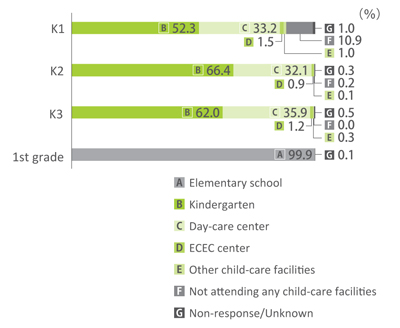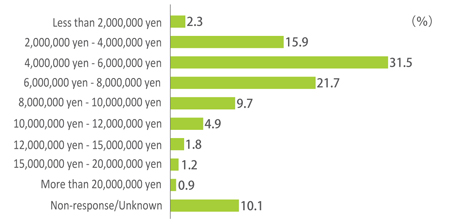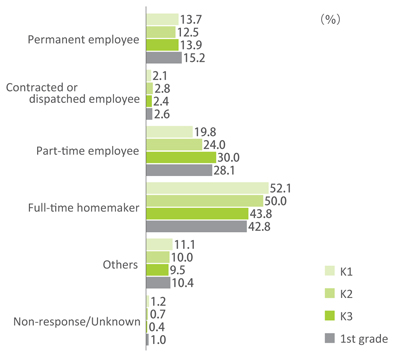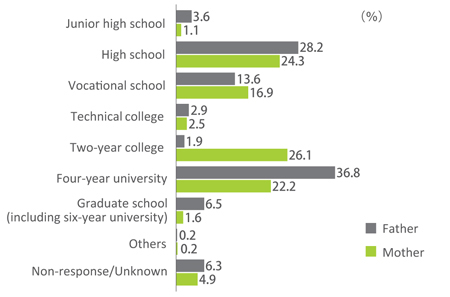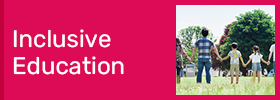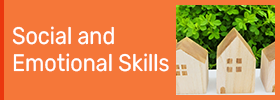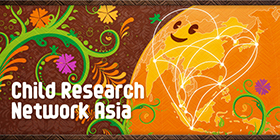- Survey background / Survey overview / Basic attributes of samples
- Chapter 1. Development of Children's Learning Attitude
- Chapter 2. Parents' Involvement in Children's Learning
- Chapter 3. Essential Factors to Cultivate Learning
- Comments on the Survey Report on Home Education from Early Childhood to First Grade in Elementary School
Survey background
Recently, there has been a significant increase in the level of international interest regarding early childhood education. Moreover, efforts are being made nationwide to smooth the transition from pre-school to elementary school between day-care centers, kindergartens, Early Childhood Education and Care Centers (ECEC centers:nintei kodomo en) and schools, which is called Yo sho setsu zoku in Japan. While such a movement is under way, "abilities leading to learning" things such as being able to carry out daily habits by yourself, show concentration and make challenges, and being able to communicate with others, are considered important.
The Child Sciences and Parenting Research Office of Benesse Educational Research and Development Institute (BERD) conducted a survey focusing on how home education is implemented regarding children's daily habits, attitudes of learning to learn, and learning hiragana (the Japanese syllabary), numbers, and expressing oneself in a logical way. BERD conducted a survey targeting mothers of children aged three to six (first year kindergarten or K1 to first year elementary school) to ascertain how parents participate in the development of learning at home, and what is necessary to create a learning attitude.
Preparation for School Education Needed in Early ChildhoodConsidering the skills necessary for the transition from early childhood to school education, and the lifelong skills which should be developed in early childhood, the survey was conducted focusing on three key themes that were considered necessary for preparing toddlers for school education.
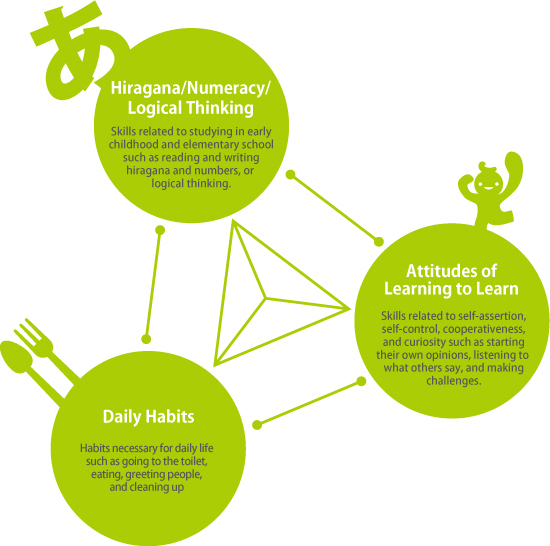
*A follow-up survey will be conducted toward mothers of three-year-olds to see how the learning process at home is developed.
Survey overview
| Theme | Aspects of Children's Learning from Early Childhood to First Grade and Parental Involvement and Awareness |
|---|---|
| Method | Mail (Self-administered questionnaires were distributed and collected by mail) |
| Period | January to February, 2012 |
| Subjects | 5,016 mothers with children between K1* and first grade in elementary school (Mailed to 14,000; effective response rate: 35.8%) |
| Survey area | All areas of Japan |
| Survey items | Daily schedule of children; Aspects of children's learning; Maternal Involvement; Mothers' perspectives on child-rearing and education; A retrospective look at early childhood; Role of the father; Satisfaction degree of child-care facility or elementary school; Afterschool activities; Reading aloud to children, etc. |
Number of samples: 5,016

*In this report;
"K1 children" refers to those attending the 3-4 year olds' class,
"K2 children" refers to those attending the 4-5 year olds' class, and
"K3 children" refers to those attending the 5-6 year olds' class.
Basic attributes of samples
